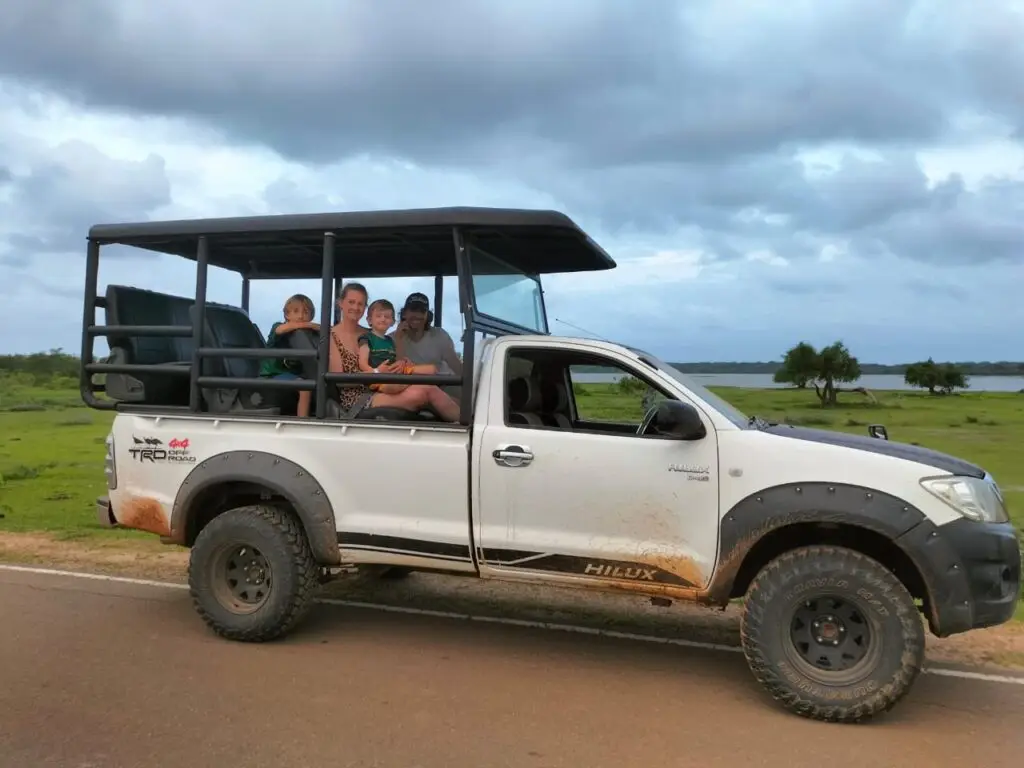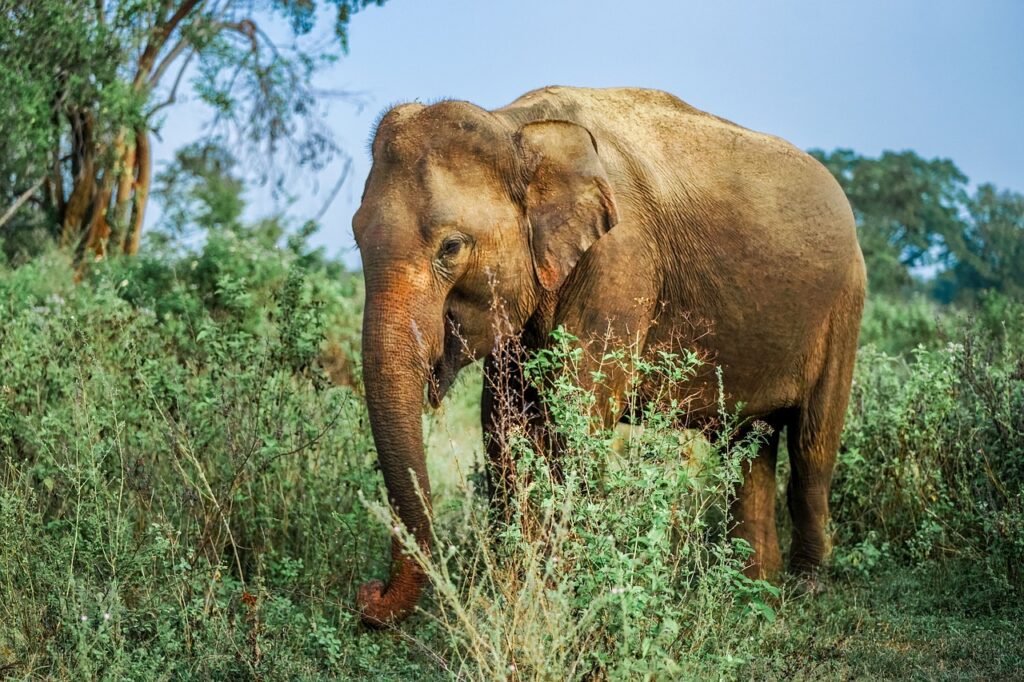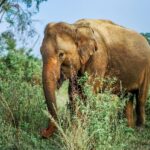Introduction to Yala National Park
Yala National Park, situated in the southeastern region of Sri Lanka, stands as a beacon of natural splendor and ecological diversity. Spanning nearly 979 square kilometers, this protected area is renowned for its rich tapestry of habitats, ranging from lagoons and rugged coastlines to dense forests and open grasslands. It is the convergence of these distinct ecosystems that makes Yala an essential destination for wildlife enthusiasts and photographers alike.
The park is divided into five blocks, each offering unique landscapes and wildlife experiences. Although Block 1, known as Ruhunu National Park, is the most frequented by visitors, photographers venturing to the lesser-known sections find unparalleled opportunities to capture rare and intimate moments of wildlife. The geographical diversity of Yala National Park creates a varied canvas, where photographers can capture the interplay of light and shadow, as well as the intricate patterns of nature.
Yala is particularly noted for its remarkable biodiversity. It harbors an impressive array of fauna, including the elusive Sri Lankan leopard, sloth bears, and a diverse population of bird species, such as the colorful peafowl and majestic serpent eagles. Moreover, the park is home to amphibians, reptiles, and an array of plant species, contributing to its status as a biodiversity hotspot. For wildlife photography in Yala, the opportunity to document such an extensive variety of species in their natural habitats is unparalleled.
The significance of Yala extends beyond its ecological value. It serves as a crucial conservation area, enforcing protection measures to ensure the sustainability of its wildlife populations. For photographers, this translates to not only experiencing a rich array of subjects but also being part of a larger effort to preserve the beauty of the natural world. Visiting Yala National Park is thus a dual opportunity to practice sri lanka safari photography while contributing to the broader conservation mission.“`html
Best Time to Visit for Photography
Embarking on a journey to Yala National Park for wildlife photography is a pursuit that blends art with adventure. The timing of your visit plays a pivotal role in achieving the optimal conditions for photographic success. The climate in Sri Lanka’s southeastern region, where Yala is located, is characterized by its tropical monsoon weather patterns, which influence both lighting conditions and animal behavior.
The dry season, extending from February to July, is widely regarded as the best time to visit Yala for photographers. During this period, the receding water sources draw a myriad of animals to the remaining watering holes, creating ample opportunities to capture diverse wildlife in activity. Additionally, the lack of dense foliage makes it easier to spot and photograph animals amidst the terrain. Morning and late afternoon safaris offer the best lighting conditions, as the soft hues of the golden hours accentuate the park’s landscapes and wildlife, adding depth and warmth to your photographs.
Conversely, the monsoon season from November to January brings an influx of heavy rains that rejuvenate the park’s flora. While the lush greenery can create stunning backdrops, the unpredictable weather and reduced probability of animal sightings can pose challenges. Photographers should be prepared for the elements, using weatherproof equipment and taking advantage of any clear windows available.
Tourist influx can also impact your photography sessions. Yala National Park can become quite crowded during peak seasons and holidays. To minimize distractions and disturbances, consider visiting during weekdays or planning your trips during shoulder seasons, such as early February or late July, when the park is slightly less crowded.
Understanding animal activity patterns is crucial. Different species are active at varying times of the day. For example, the elusive leopards are often spotted during early mornings and late afternoons. Planning your excursions around these peak activity windows can significantly enhance your chances of capturing remarkable moments.
Ultimately, achieving the most rewarding wildlife photography in Yala requires a balance of strategic planning and a keen understanding of the environment. By aligning your visit with optimal seasons, times, and awareness of animal behaviors, you can create breathtaking snapshots of Sri Lanka’s natural splendor.“““html
Essential Photography Gear
Embarking on a wildlife photography expedition to Yala National Park demands meticulous preparation, especially in terms of the equipment you bring along. Ensuring you have the right gear can make the difference between capturing a stunning moment and missing it entirely.
Firstly, selecting a reliable camera body is paramount. A DSLR or mirrorless camera with a fast and accurate autofocus is ideal. The Canon EOS R series or the Nikon Z series are noteworthy options, thanks to their exceptional image quality and durability. A camera body that offers good low-light performance will be beneficial for early morning or late evening photo shoots common in Yala.
When it comes to lenses, versatility is key. A telephoto lens, such as a 100-400mm, is indispensable for capturing distant wildlife in their natural habitat. Additionally, a wide-angle lens, like a 16-35mm, can be wonderful for landscape shots and capturing the park’s diverse ecosystems. Having a macro lens might prove valuable for photographing small subjects such as insects and flowers.
A sturdy tripod is essential for stability, especially during low-light conditions. Carbon fiber tripods are lightweight yet durable, making them perfect for rough terrain. Pair this with a ball head for quick adjustments and ease of use.
Don’t overlook the importance of filters. Polarizing filters can reduce glare and enhance the vibrancy of your photos, while neutral density filters can help manage exposure during bright daylight. Lens hoods and rain covers will protect your gear from the elements.
Packing and protecting your equipment is crucial, considering the rugged conditions of Yala. Invest in a high-quality, waterproof camera backpack that offers padded compartments for each piece of gear. Protective cases for individual lenses and additional memory cards and batteries can be lifesavers.
Being well-equipped and organized not only enhances your experience but ensures you are ready to capture breathtaking images of the wildlife and landscapes Yala National Park has to offer.“`
Understanding the Wildlife
Yala National Park, nestled in the southeast region of Sri Lanka, is renowned for its rich and diverse wildlife, making it a premier destination for safari photography. The park is home to an array of animal species, with the most iconic being the leopard, a focal point for many wildlife photographers. The Sri Lankan leopard, an elusive and majestic creature, thrives in the dense forests and grasslands within the park. Photographers aiming to capture the perfect shot of these predators should acquaint themselves with the animal’s behavioral patterns; early mornings and late afternoons are prime times, as leopards are most active during these hours.
Equally captivating are the large herds of elephants that roam the park. Their social structure, often comprising matriarchal herds led by elder females, provides ample opportunity for dynamic and heartwarming captures. Observers should seek out waterholes and mud baths where elephants frequently congregate, especially during dry seasons. Maintaining a safe distance and using telephoto lenses is essential to avoid disturbing these gentle giants and respecting their natural behavior.
The park is also a sanctuary for the elusive sloth bear. Spotting this nocturnal mammal requires patience and occasionally a stroke of luck, as these bears are less predictable in their movements. They are often seen at termite mounds or fruiting trees. Photographers are advised to be prepared and vigilant, as sloth bear sightings can be fleeting but incredibly rewarding.
Bird enthusiasts will find Yala National Park a paradise, with over 215 bird species recorded. From the colorful Indian peafowl to the striking grey-headed fish eagle, the diversity of avian life is staggering. To capture the avian spectacle, mornings are ideal when bird activity peaks. Utilizing a combination of patience, appropriate gear such as long lenses, and knowledge of the birds’ habitats can significantly enhance the chances of obtaining stunning photographs.
Adhering to ethical photography practices is paramount. This includes keeping a safe distance from wildlife, minimizing noise, and avoiding the use of flash to prevent distressing the animals. Ethical wildlife photography not only ensures the safety and comfort of the animals but also presents an authentic representation of their natural behaviors and environments, reflective of the beauty that Yala National Park has to offer.
Techniques for Landscape Photography
Yala National Park, a renowned gem of Sri Lanka, offers myriad opportunities for both novice and seasoned photographers to capture its unparalleled beauty. When venturing into this diverse territory, mastering a few essential techniques can elevate your landscape photography to professional levels. Understanding aspects like composition, lighting, and focal points is paramount to capturing the park’s stunning landscapes effectively.
One of the primary techniques in landscape photography is the rule of thirds. By dividing your frame into nine equal parts with two horizontal and two vertical lines, you can position key elements along these lines or at their intersections. This technique naturally guides the viewer’s eye through the image, enhancing visual interest and balance. Yala National Park’s serene lagoons, undulating grasslands, and dramatic rock formations provide perfect subjects to practice this method.
Lighting plays a pivotal role in landscape photography. Early morning and late afternoon, often referred to as the golden hours, offer soft, diffused light that can lend a warm, pleasing glow to the natural scenery. During these times, the park’s diverse habitats – from the dense forests teeming with wildlife to the serene lagoon landscapes – are bathed in hues that accentuate their intrinsic beauty. Conversely, the blue hour, just before sunrise or after sunset, introduces an ethereal quality, casting a mystical aura over Yala’s rugged terrains.
Selection of focal points is another crucial technique. A strong focal point draws the eye and reinforces the narrative of your photograph. In Yala National Park, unique rock formations like the towering Kudumbigala and picturesque water bodies such as Patanangala and Pilinnawa lagoons serve as enigmatic focal points. Positioning a striking tree or an unusual rock in the foreground can add depth and dimension to your composition, making it more compelling.
By incorporating these fundamental techniques into your photography repertoire, the diverse terrain and natural beauty of Yala National Park can be captured in all its splendor. Whether exploring its vast forests, glistening lagoons, or dramatic rock formations, each frame can tell a compelling story, embodying the exquisite landscapes of this Sri Lankan haven.
Tips for Capturing Action Shots
When photographing the dynamic wildlife of Yala National Park, it’s crucial to capture action shots that convey the raw energy and movement of the animals. To achieve this, start by adjusting your camera settings to suit high-speed scenarios. Set your camera to Shutter Priority mode (S or Tv mode), which allows you to control the shutter speed while the camera automatically adjusts the aperture. This mode is ideal for freezing the rapid movements of wildlife in Yala.
A fast shutter speed is essential for action shots. Aim for a minimum of 1/1000th of a second to freeze the motion of lively subjects, such as a leopard sprinting or a bird taking flight. If the light permits, you can experiment with even higher shutter speeds to ensure sharpness and clarity. Using a wider aperture (smaller f-number) can also help maintain a fast shutter speed by allowing more light into the camera sensor.
Leveraging continuous autofocus (AF-C) is another critical aspect when capturing action in wildlife photography in Yala. This setting continuously adjusts focus as animals move, ensuring that your subject stays sharp even when in motion. Pair this with the burst mode on your camera, which allows you to take a series of shots in rapid succession. This increases your chances of getting the perfect moment in focus and can be particularly effective during predator-prey interactions or other fast-paced moments.
Positioning and anticipation play significant roles in capturing compelling action shots. Familiarize yourself with the behavior patterns of different species within Sri Lanka’s diverse ecosystem. Anticipate movements by observing the body language of your subjects, allowing you to frame and capture the shot just as the action unfolds. If possible, use a tripod or monopod for added stability, ensuring that your camera remains steady even during the most intense moments.
Finally, don’t forget to experiment with angles and perspectives. Lower angles can create a sense of immediacy and involvement in the scene, providing a unique vantage point that emphasizes the drama and intensity of the wildlife in motion. By following these techniques, photographers can effectively capture the thrilling essence of Yala National Park and its vibrant wildlife.
Post-Processing and Editing
Post-processing is a vital element in the realm of wildlife and landscape photography, transforming raw images into stunning visual representations. Capturing photographs in Yala National Park, a biodiversity hotspot in Sri Lanka, sets a high bar for quality. The nuances of light, the vivid wildlife, and the dynamic landscapes all necessitate adept post-processing techniques to truly bring out the essence of these captures.
Several software tools are indispensable for post-processing. Adobe Lightroom and Photoshop are industry standards, providing comprehensive solutions for both basic and advanced editing needs. Similarly, apps like Luminar AI and Capture One offer unique features that can make your photos look professional with minimal effort.
Starting with basic adjustments, exposure corrections ensure that your image isn’t too dark or overly bright. Adjusting the contrast enhances the depth and detail, making elements stand out prominently. The color balance tool helps in correcting any color casts and ensures that hues appear natural and true to life, a crucial step in Yala National Park photography where vibrant colors play a significant role.
Diving into more advanced techniques, noise reduction can significantly improve the image quality, especially in low-light conditions often faced during early morning or twilight shoots. Use tools like Lightroom’s Noise Reduction sliders or Photoshop’s Noise Reduction filter to smooth out grainy textures. Sharpening is another critical process; it sharpens the edges and details, ensuring that even the slight intricacies in the fur of a leopard or the feathers of a rare bird are crisply defined.
Furthermore, localized editing techniques such as using adjustment brushes or graduated filters can target specific parts of the image, enhancing the overall compositional balance. By adequately employing these tools, you can highlight the majestic landscapes and the diverse wildlife that Yala National Park has to offer, turning an ordinary snapshot into a breathtaking work of art.
Safety and Ethical Guidelines
When engaging in wildlife photography in Yala National Park, it is imperative to adhere to safety and ethical guidelines to protect both yourself and the park’s intricate ecosystem. Yala, renowned for its diverse wildlife, particularly the elusive Sri Lankan Leopard, offers numerous opportunities for capturing stunning images. However, respect for the natural habitat and its inhabitants must be paramount.
One fundamental rule for maintaining safety and ethics in Yala is keeping a safe distance from animals. Close proximity to wildlife can disturb their natural behavior and pose risks to both the photographer and the animals. Using long lenses for closer shots ensures safety and captures breathtaking details without intruding on their space. This respectful distance helps the species remain comfortable and undisturbed in their natural environment.
Another crucial aspect is avoiding disruption of animals’ routines. Patience is a virtue in wildlife photography; it requires understanding and observing quietly rather than attempting to coerce animals into active or interesting behavior. Photographers should refrain from using flash or artificial lighting, as it can startle or upset the animals, causing undue stress.
Adhering to Yala National Park‘s rules and regulations is essential. These guidelines are designed to ensure the safety of both tourists and wildlife, while promoting a sustainable tourism model. For example, staying on designated paths prevents habitat destruction and minimizes human impact on the environment. Always follow instructions provided by park rangers, as they are well-versed in daily operations and wildlife behavior within the park.
Conservation and responsible tourism play significant roles in maintaining the beauty and biodiversity of Yala. By respecting wildlife and their habitats, photographers contribute to the preservation of the park for future generations. As visitors and documentarians, it is our responsibility to ensure that our actions do not have adverse effects on the ecosystems we cherish and seek to immortalize through our lenses.





















